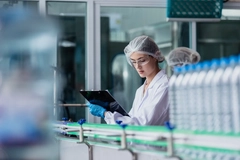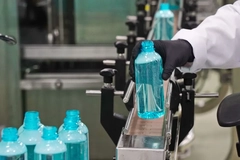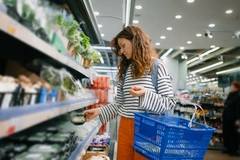Short and sweet: Consumers demand reduced packaging for confectionery products amid paper-pack boom

08 Feb 2023 --- Besides paper and bio-based packaging, consumer awareness and demand for environmental sustainability have recently increased in the confectionery packaging industry. PackagingInsights speaks to confectionery packaging experts from Nestlé and Ritter Sport about emerging industry trends.
Katja Binder, head of packaging development at Ritter Sport, tells us that current key trends in the confectionery packaging industry depend on the market. “For Europe, the key trends are still tending to more [environmentally] sustainable packaging. Therefore, we are talking about paper or paper-based packaging and at the same time, recyclability is getting increasingly important.”
Furthermore, according to Innova Market Insights, confectionery product launches in bio-based packaging have registered a +103% average annual growth over the past five years.
Although companies are increasingly developing paper-based packaging alternatives, Plastic – Not Specified is the leading material for confectionery packaging and has seen a slight annual increase between October 2017 – September 2018 and October 2021 – September 2022, states the market researcher.
 Since last month, KitKat has been trialing recyclable paper-based packaging. Varying consumer demand
Since last month, KitKat has been trialing recyclable paper-based packaging. Varying consumer demand
Binder asserts that consumer awareness of eco-friendly packaging is an emerging trend in some countries, but lacking in others. “With the development of new materials and the increasing importance of the discussion about packaging among the public, consumer awareness has increased.”
She continues by highlighting that “the Asian market, for example, is not yet as demanding [for environmentally sustainable packaging] as the European market. Here, the expectations of European consumers have so far been higher than those of Asian consumers.”
“Across geographies and confectionery product varieties, we recognize the consumer need for packaging that is not just vibrant, but also ensures product safety and is [environmentally] sustainable,” adds the Nestlé spokesperson.
Binder stresses that consumers have become much more sensitive to environmental issues, “but at the same time, it has also become more difficult for them to judge what they see and even what they feel.”
“For example, it is hard to judge if a material is ‘enough paper’ to be recycled through the paper bin or if there is a plastic component included, which might make paper recycling impossible. Therefore, a lot of clarification and education needs to be done,” she elaborates.
Paper packaging boom
In January 2023, KitKat, one of the world’s most popular confectionery products, introduced recyclable paper packaging as a pilot test for the brand. “The recyclable paper packaging will be available for a limited time for its four-finger bar in Australia, across Western Australia, South Australia and Northern Territory,” a Nestlé spokesperson tells us.
Nestlé will produce more than a quarter of a million KitKat bars wrapped in paper in an exclusive partnership with Coles, a local retailer. The pack has a QR code that people can scan to have their say and give valuable feedback on the new paper packaging, says Nestlé.
In recent years Nestlé continued to enhance its focus on reducing packaging. “In 2021, Nestlé in the UK and Ireland redesigned its confectionery sharing bags to use significantly less packaging,” adds the spokesperson..jpg) Ritter Sport’s paper-based packaging for chocolate.
Ritter Sport’s paper-based packaging for chocolate.
Nestlé took further initiatives to improve the recyclability of its confectionery packaging. In 2021, Smarties became the first global confectionery brand to switch to recyclable paper packaging.
“The innovative new designs included sharing bags, multipacks and giant hexatubes made from coated paper, paper labels or carton board, all produced from sustainably sourced and recyclable material. In 2022, Quality Street introduced recyclable FSC-certified paper packaging for its twist-wrapped sweets worldwide,” says Nestlé.
Safety first
Binder says that for Ritter Sport, a comprehensive view of environmental sustainability is important, “starting with the sourcing of our raw materials, through our energy consumption and energy mix, to the reduction of our emissions and the sustainability of our packaging – which has been fully recyclable for many years. However, this requires that a recycling system is in place. And not all markets where we sell our products have these systems already.”
“Talking about food packaging, it is important to mention that product safety and product security for best product quality always have to be in the first place.”
“Though we have been involved in developing new materials and made first tests with paper-based packaging, we have not yet found the optimal material. However, we are very confident there will be new options coming up,” concludes Binder.
By Natalie Schwertheim











